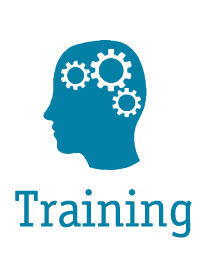|
For More Information, Contact: |
The Applied Technology Council (ATC) and the Multidisciplinary Center for Earthquake Engineering Research (MCEER), State University of New York at Buffalo, are pleased to announce the ATC-17-2 Seminar on Response Modification Technologies for Performance-Based Seismic Design, the third in a series of seminars first held in San Francisco in 1986. The seminar will focus on seismic isolation, energy dissipation, active and semi-active control systems, and the use of new materials in structural response modification. It will be held May 30-31, 2002 at the Hyatt Regency Los Angeles. The purpose of the 2-day seminar is to present a comprehensive picture of the state of practice and current research on response modification technologies for performance-based seismic design, including future directions.
The seminar program has been developed for design professionals, regulators, researchers, manufacturers and contractors, owners, and facility managers. The program will include papers on planned and completed applications, including new structures as well as rehabilitated existing structures -- corporate facilities, hospitals, data centers, emergency operation centers, large bridges, and other structures. Themes and topics to be addressed include:
- case studies of current and future applications summarizing project information and important issues (e.g., function, number, description, and size of devices and systems used; codes and guidelines followed; analysis approach; performance goals; design ground motions; peer review; permitting; economic analysis; and problems encountered),
- summaries of recent research,
- future directions in the development and application of devices and systems, and
- emerging technical and policy issues, including barriers to implementation.
The Seminar Steering Committee is seeking papers pertaining to the above themes and topics. Verbal presentations are planned, but the Steering Committee is also considering the possible inclusion of poster papers. Persons wishing to present a paper at the seminar are requested to submit an abstract of their paper to ATC on or before January 31, 2002. Abstracts should be one page, typewritten (single spaced) and not more than 250 words in length. Please indicate in the upper right corner of the abstract the format of presentation preferred (verbal or poster). Abstracts should be submitted to: ATC-17-2 Project, Applied Technology Council, 555 Twin Dolphin Drive, Suite 550, Redwood City, CA 94065; Fax: 650/593-2320; e-mail, This email address is being protected from spambots. You need JavaScript enabled to view it.. For more information, download the PDF version of the First Announcement and Call for Abstracts Brochure.
Authors of accepted abstracts will be notified by February 15, 2002. Written versions of papers presented at the seminar, not to exceed 12 pages in length including all figures and tables, will be due April 30, 2002, in order to permit the publishing of the Seminar Proceedings on the opening day of the seminar.
An exhibition space is planned and exhibits are encouraged. Field trips are also planned.



